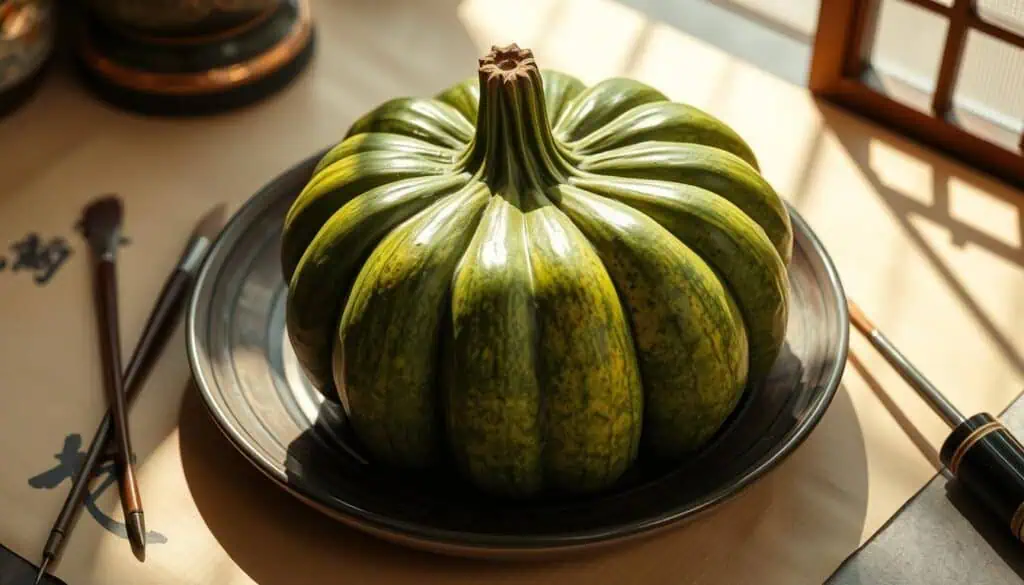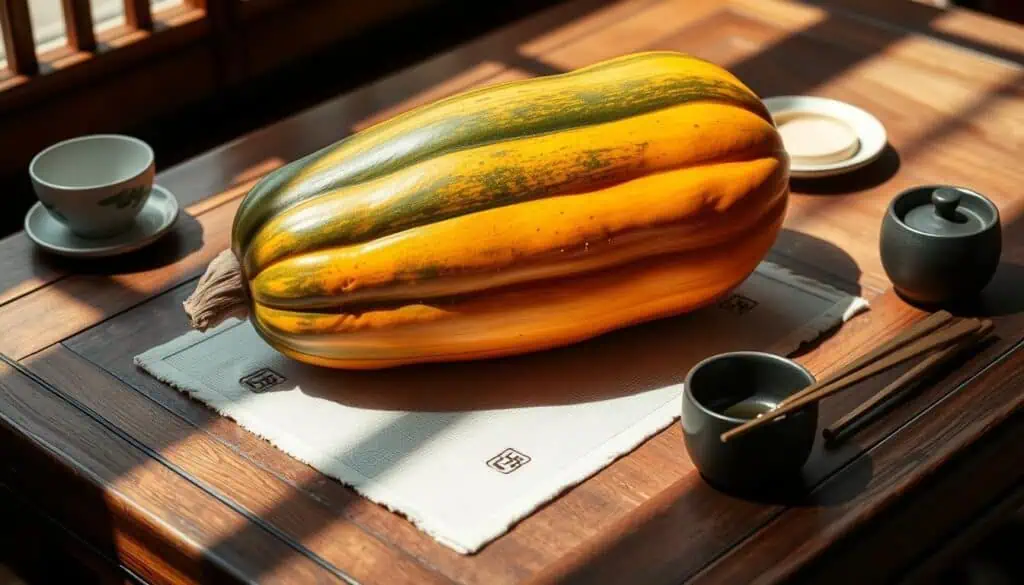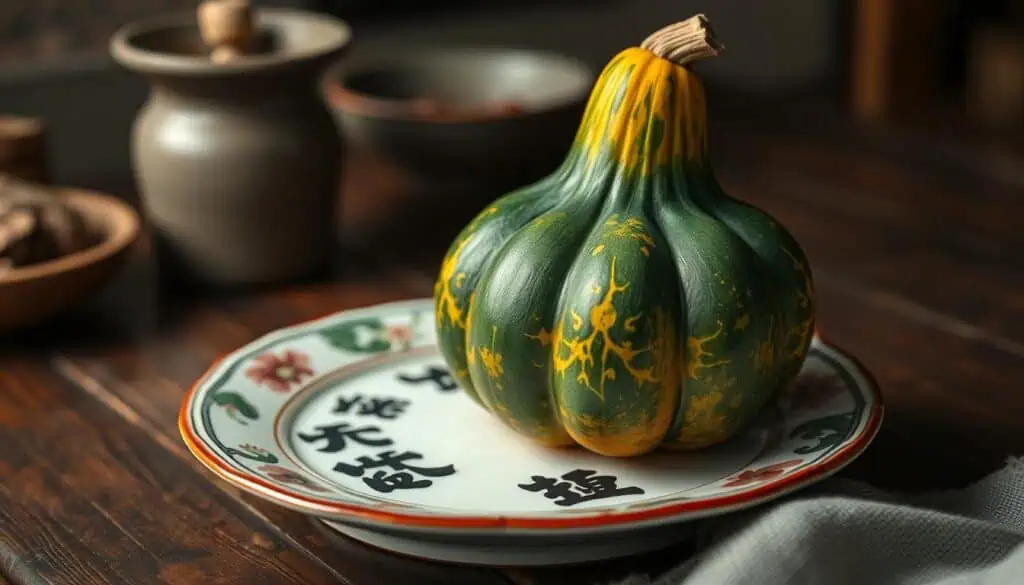Kabocha squash, often called Japanese pumpkin, is a sweet, earthy winter squash that has gained immense popularity in Asian cuisine. Known for its creamy texture and vibrant orange flesh, kabocha is a staple in many kitchens worldwide. If you’re curious about Kabocha Squash in Chinese cuisine or how it fits into traditional and modern recipes, this article explores all the answers.
What Does Kabocha Squash Translate to in Chinese?
In Chinese, kabocha squash is most commonly referred to as 南瓜 (nán guā), which translates to ‘pumpkin’ or ‘squash.’ However, to distinguish it from local varieties, it is often labeled as 日本南瓜 (rì běn nán guā), meaning ‘Japanese pumpkin.’ This specific term highlights its origins and sets it apart from other squash used in Chinese markets. If you’re looking to learn more about Kabocha Squash in Chinese cuisine, understanding these terms can help you find the right ingredient for your dishes.
Furthermore, kabocha is not only delicious but also incredibly nutritious. For example, it is rich in vitamins A and C, both of which contribute to a healthy immune system. To maximize its nutritional benefits, many people wonder, Can you eat the skin of kabocha squash? According to Do You Eat the Skin of Kabocha Squash?, the answer is yes, as the skin is both edible and full of fiber. If you’re curious about Kabocha Squash in Chinese cuisine, you’ll find that it is widely used in various traditional dishes.
Where Did Kabocha Squash Originate?
Originally, kabocha squash was cultivated in Central and South America before being introduced to Asia. Portuguese traders brought this versatile vegetable to Japan in the 16th century, and from there, it made its way to neighboring countries like China. Over time, kabocha became a vital ingredient in many traditional dishes.
Interestingly, its ability to absorb flavors has made Kabocha Squash in Chinese cuisine a favorite. If you are wondering whether to peel it before cooking, the decision often depends on the dish. To learn more, check out Do You Peel Kabocha Squash Before Cooking?.

Why is Kabocha Squash Popular in Chinese Cuisine?
1. Versatility in Cooking
Kabocha squash is incredibly versatile, making it a go-to ingredient for a variety of recipes. For instance:
- Steaming: A simple yet effective way to retain its natural sweetness and nutrients.
- Boiling: Commonly used for soups to create a rich and flavorful broth.
- Stir-Frying: Perfect for balancing bold ingredients like soy sauce, garlic, or chili.
Additionally, kabocha squash’s natural sweetness makes it suitable for desserts, such as squash-filled buns or sweet cakes.
2. Nutritional Value
In addition to its culinary appeal, kabocha squash is celebrated for its health benefits. For example:
- It contains beta-carotene, which supports eye health.
- Its vitamin C content boosts immunity.
- The dietary fiber aids digestion and promotes gut health.
put this keyword “Kabocha Squash in Chinese” on this paragraph “Moreover, in Traditional Chinese Medicine (TCM), kabocha squash is classified as a warming food. Therefore, it is often recommended during colder months to nourish the stomach and enhance energy flow.
How to Identify Kabocha Squash in Chinese Markets
When shopping for kabocha squash in Chinese markets, you may notice its distinct characteristics:
- Dark Green Skin: Often speckled with white streaks, giving it a rustic appearance.
- Round Shape: Slightly flattened and pumpkin-like.
- Labels: Commonly marked as 南瓜 or 日本南瓜.
Additionally, vendors sometimes sell halved kabocha squash to make it easier for customers to inspect its vibrant orange interior.
How Kabocha Squash is Used in Chinese Cuisine
Traditional Recipes
In traditional Chinese cuisine, kabocha squash is a key ingredient in several dishes. For example:
- Kabocha Squash Soup with Ginger: This warming soup combines squash and ginger for a soothing, nutrient-packed dish.
- Steamed Kabocha with Soy Sauce Drizzle: Thin slices of steamed squash are topped with a savory mixture of soy sauce, sesame oil, and scallions.
- Stir-Fried Kabocha with Minced Pork: The tender, sweet squash pairs perfectly with umami-rich pork.
Modern Fusion Recipes
In modern Chinese cooking, chefs have found innovative ways to incorporate kabocha. For instance:
- Kabocha Dumplings: Squash purée is used as a flavorful filling for steamed dumplings.
- Squash Noodles: Spiralized kabocha serves as a low-carb alternative to traditional noodles.
- Sweet Squash Pancakes: These are made by blending mashed kabocha with flour and sugar.
For more ideas, check out Chinese Squash Recipes.

FAQs About Kabocha Squash
1. Can You Eat the Skin of Kabocha Squash?
Yes! The skin is entirely edible and packed with fiber. For tips on preparation, visit Do You Eat the Skin of Kabocha Squash?.
2. Should You Peel Kabocha Squash?
Peeling is optional. While the skin becomes tender during cooking, some recipes, like purées, may require peeling for a smoother texture. Learn more at Do You Peel Kabocha Squash Before Cooking?.
3. Is Kabocha Squash Healthier Than Pumpkin?
Both are nutritious, but kabocha is denser and sweeter, making it a better choice for dishes that require a creamy texture.
4. How Does Kabocha Squash Taste?
It has a sweet, nutty flavor, often described as a mix between sweet potato and pumpkin.
Health Benefits of Kabocha Squash
Kabocha squash is not just delicious—it’s also incredibly healthy. For instance:
- Supports Eye Health: Its high beta-carotene content is vital for maintaining good vision.
- Boosts Immunity: Vitamin C helps the body fight infections.
- Aids Digestion: Dietary fiber regulates bowel movements and promotes a healthy gut.
- Weight Management: Its low-calorie content makes it ideal for weight-conscious individuals.
Innovative Ways to Use Kabocha Squash
If you’re looking to get creative with kabocha squash, here are some ideas:
- Roasted Wedges: Sprinkle with olive oil, salt, and spices, then roast until caramelized.
- Kabocha Curry: Add squash chunks to a coconut milk-based curry for a hearty meal.
- Squash Risotto: Blend roasted kabocha into a creamy risotto for added richness.
To discover more unique recipes, explore TomadeRecipy.
Conclusion
Kabocha squash, or 南瓜 (nán guā) in Chinese, is much more than just a vegetable—it’s a cultural and culinary treasure. Its sweet flavor, creamy texture, and health benefits make it a versatile ingredient in traditional and modern dishes alike. Kabocha Squash in Chinese cuisine is used in a variety of ways, from soups to desserts, offering endless possibilities for creating delicious and nutritious meals.
So why not add kabocha squash to your next recipe? Whether you’re steaming it, stir-frying it, or incorporating it into fusion cuisine, this humble squash is sure to elevate your culinary adventures. For even more inspiration, visit TomadeRecipy and start exploring today!

